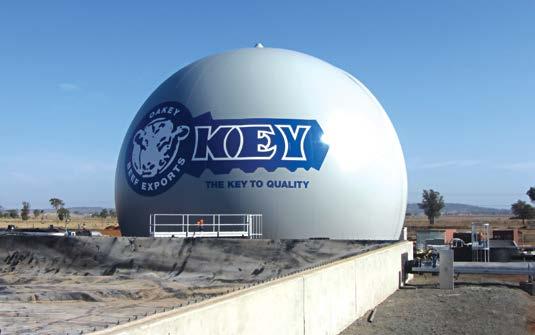CLIMATE CHANGE
UQ researchers develop framework for climate change mitigation in mining University of Queensland researchers have developed a framework that aims to reduce the mining industry’s impact on climate change by accounting for sources and sinks of greenhouse gas (GHG) emissions. The proposed framework, published in Nature Geoscience, will allow the mining industry to better monitor, gather and assess emissions data, identify measurement gaps and evaluate and apply mitigation strategies. UQ Sustainable Minerals Institute (SMI) researcher and lead author Dr Mehdi Azadi said primary mineral and metal production accounted for about ten per cent of the world’s energy-related GHG emissions in 2018. He said the framework addressed climate change related issues by identifying major mitigation pathways. “Rising standards of living have led to increasing demand for mining activities to provide the minerals and metals required by many technologies,” Dr Azadi said. “While the mining sector contributes to global emissions, it is also increased affected by climate change.” “Our framework examines the sources of GHG emissions across the mining supply chain – from mining, ore processing, transportation, to waste management – and identifies ways to improve mitigation strategies,” he said. 34
Waste + Water Management Australia | March/April 2020
“Fugitive emissions reduction, resource efficiency, energy usage, and biological solutions are the four major pathways we have identified as major opportunities for GHG mitigation in mining. These pathways will allow policymakers and miners to create flexible plans for addressing GHG emissions by taking into account operational requirements and external factors,” Dr Azadi added. “The framework is flexible enough to be tailored to a specific commodity, mining operation, climate or country.” The researchers highlighted copper mining in Chile as an example of how the climate change impacts of mining may be calculated. “Using this framework, we hope to collaborate with governments, the mining industry and research institutions to create guidelines or toolboxes for certain commodities, climates, countries and operations,” Dr Azadi said. “Our framework will help the industry reduce its carbon footprint and provide financial benefits by lowering energy consumption across the supply chain, while also decreasing the adverse environmental impacts caused by mining operations.” “For green technologies to be effectively implemented, it is essential that the mining industry accurately and transparently account for greenhouse gas emissions,”
Dr Azadi said. “But this isn’t just about reducing mining’s effect on climate change, it is also about reducing climate change’s effect on mining; the industry needs accurate data to reduce its carbon footprint and improve risk management.” The article is co-authored by SMI Associate Professor Mansour Edraki, UQ and University of Delaware Professor Saleem H. Ali and University of Technology Sydney’s Dr Stephen Northey. Professor Saleem H. Ali said carbon accounting in mining was increasingly important. “Carbon accounting of mining is becoming even more urgent now because minerals for clean energy infrastructure are being widely explored,” he said. “Understanding the full carbon budget of extraction is important in considering a range of potential supply sources and processing technologies.” SMI Director Professor Neville Plint said the framework reflects the Institute’s commitment to working with the minerals industry to implement sustainable changes. “An important part of improving mining’s role in sustainable a sustainable world is working with industry to develop and implement solutions that are practical and effective – this framework is a great example of that.”










